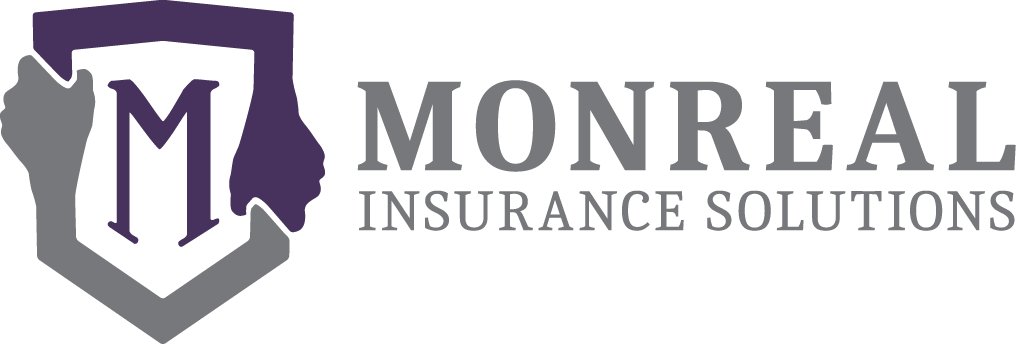
When leaves start to fall and the air gets cooler, most homeowners focus on pumpkin spice and cozy evenings. But autumn also brings a set of risks that can damage your property and drain your finances if you’re not properly insured. Here’s why fall is the ideal season to review — or finally purchase — the right home insurance.
Heating Systems and Fire Hazards
As temperatures drop, homeowners turn on furnaces, light fireplaces, and bring out portable space heaters — and with that comes real risk. U.S. fire-department data show an annual average of roughly 38,000–41,000 fires involving heating equipment, which account for about 12–14% of home structure fires and cause hundreds of deaths, thousands of injuries, and over $1 billion in property loss each year.
Not all heating-device fires are the same. Portable space heaters and heating stoves make up a relatively small share of heating fires but are disproportionately deadly: portable heaters were only about 3% of heating fires but accounted for around 40% of fatal heating fires in recent multi-year analyses. That means improper placement or use of a space heater (near curtains, furniture, or on unstable surfaces) greatly increases the chance of a fatal outcome.
The financial stakes are high. Fire-restoration and rebuilding costs vary widely by severity, but industry surveys and restoration firms estimate typical fire-damage restoration averages in the tens of thousands of dollars — commonly reported average ranges of ~$11,000–$27,000 for moderate incidents and much higher for structural losses. Without adequate insurance, a single home fire can easily wipe out savings and leave families with major rebuilding bills and liability exposure.
Practical prevention steps homeowners should take this fall:
- Schedule professional HVAC and chimney inspections before heavy heating use. Regular tune-ups reduce ignition risks.
- Use space heaters only on level, non-combustible surfaces; keep them at least 3 feet from curtains, furniture and combustibles and plug them directly into wall outlets (no extension cords).
- Clean and test smoke detectors (replace batteries or units older than 10 years) and have a family escape plan.
Insurance guidance for heating-related risk:
- Confirm your homeowners policy covers fire and smoke damage (most standard HO policies do), and check dwelling limits vs. your current reconstruction cost.
- Review additional living expense (ALE) coverage so you’re not left with hotel and relocation bills after a loss.
- Ask your agent about discounts for having professionally maintained heating systems, monitored smoke alarms, or bundled policies — small actions can reduce premiums and close coverage gaps.
If you’d like, we can run a quick policy review to make sure your limits are adequate before winter — contact us to compare options.
Gutters, Leaves, and Water Damage
Falling leaves are picturesque — until they clog your gutters and start a chain reaction of water problems. Clogged or damaged gutters are a frequent trigger for costly water damage because they prevent proper drainage away from your roof and foundation. Left unchecked, this can lead to:
-
roof leaks and damaged shingles,
-
ice dams in colder months that force water under shingles,
-
basement seepage or flooding as water pools near the foundation, and
-
mold growth and structural damage over time. erieinsurance.com
How big is the risk?
Water damage and freezing are consistently one of the top causes of homeowners insurance claims. Multiple industry reports show that water damage and freezing account for roughly 23–29% of homeowners’ property claims, and the average payout for such a claim is commonly reported in the low-to-mid five figures (roughly $12,000–$14,000 per claim). That makes water-related events the second-largest category of property claims after wind/hail in many recent datasets.
Why freezing matters
When gutters are blocked, meltwater can refreeze along the eaves and form ice dams, which force water under roofing materials and into attics and ceilings. Similarly, pipes that run along exterior walls or in unheated spaces are at higher risk of freezing and bursting when insulation is poor — and pipe bursts are a common source of sudden, high-cost water claims. Insurers will often deny or reduce payments if they determine the homeowner neglected routine maintenance or failed to take reasonable steps (like insulating pipes or maintaining heat).
Wind, Hail, and Storm Season
Autumn storms bring strong winds, heavy rains and — in many regions — damaging hail. Those events are not just inconvenient: they’re among the single biggest drivers of property damage claims in the U.S. and can quickly create out-of-pocket expenses in the thousands.
How big is the risk?
• Multiple industry studies show wind and hail are the leading causes of homeowners’ property claims. Insurance Information Institute (III) data and industry summaries report wind/hail made up roughly one-third to over 40% of homeowner property claims in recent years (for example, wind/hail accounted for about 40.7% of claims in 2022).
Why this matters in autumn:
• Autumn brings the combination of leftover summer energy in the atmosphere plus temperature gradients that spawn strong extratropical storms, nor’easters in the Northeast, and severe convective storms (including hail) in parts of the Plains and Midwest. FEMA’s hazard tools and national risk index show hail and wind exposures remain widespread across large parts of the U.S., with measurable expected annual losses in many counties. That geographic breadth means almost every homeowner should consider wind/hail risk.
Bottom line for homeowners:
A single autumn storm can cause thousands of dollars in damage — and without proper coverage or with a high percentage wind/hail deductible you could face large out-of-pocket costs. Reviewing policy language, checking deductibles, updating replacement-cost limits, and doing simple home hardening now are low-friction ways to reduce risk before a season of stronger storms arrives. If you’re unsure about your coverage or your deductible, contact us to review your policy and get a tailored quote.
The Flood Coverage Gap
Why this matters: Most standard homeowners policies do not cover flood damage — flood insurance must be bought separately. That’s not a minor fine print: flooding is one of the most common and most expensive natural disasters in the U.S., and even a small amount of water can do catastrophic damage.
Floods are frequent and costly. Billion-dollar flood and storm events have increased in frequency and cost: NOAA’s NCEI shows that climate- and weather-related disasters (including flood and inland-flooding events) have become more common and more expensive in recent years. Heavy rainfall, coastal storm surge, dam breaks, and urban flash floods all contribute — and losses add up quickly.
One inch of water can wreck a home. FEMA estimates that just one inch of floodwater inside a typical home can cause up to $25,000 in damages (flooring, drywall, insulation, appliances, electronics, mold remediation and more). That’s often far more than a homeowner expects, and far more than an out-of-pocket emergency budget can absorb.
Flooding is increasingly frequent and expensive — and standard homeowners insurance usually won’t help. Whether you’re in a FEMA-mapped “high risk” area or not, now is the time to check your flood exposure and add flood coverage if needed. For a clear comparison of NFIP and private flood options, and to help pick the right limits and mitigation steps for your home, call or text us for a personalized quote.
Rising Costs and Uninsured Risks
Homeowners across the U.S. have been feeling the squeeze. From 2018 to 2022, average homeowners’ insurance premiums rose 8.7% faster than inflation overall.
In some high-risk ZIP codes (those with elevated exposure to climate or natural disaster perils), premiums rose even more—consumers in the top 20% risk zones paid 82% more than those in the least risk zones.
More recently, insurers are instituting double-digit annual increases. In 2024, U.S. homeowners’ insurance rates rose 10.4% compared to the previous year. In the preceding year (2023), increases of 12.7% were reported in many states.
In certain states, conditions are even more dramatic. For example, California recently approved a 17% premium hike for State Farm homeowners—part of a broader trend of insurers seeking higher rates or pulling out of high-risk markets entirely.
The Reality: A Surprisingly High Number of Uninsured Homes
Despite these risks, a significant portion of homeowners remain uninsured — or severely underinsured.
-
A recent LendingTree analysis reports that 13.6% of owner-occupied homes in the U.S. (≈ 11.3 million of 82.9 million homes) lack adequate insurance coverage (or effectively no coverage, defined as paying less than $100 annually).
-
In some analyses, the rate of uninsured homes is slightly lower — for example, the Consumer Federation of America estimates 7.4% of homeowners are uninsured (≈ 6.1 million homes) in its “$1.6 Trillion of Uninsured American Homes” report.
-
The discrepancy is partly due to different definitions (completely uninsured vs severely underinsured), methodology, and regional variation. But both data points illustrate that millions of homeowners are exposed.
What Happens When a Home Is Uninsured (or Underinsured)
When disaster hits — fire, windstorm, water damage, flood, hail, etc. — the consequences are far-reaching:
-
All costs fall on the homeowner: Repairs, rebuilding, debris removal, temporary lodging, lost personal property — there’s no insurer to help absorb the cost.
-
Financial devastation: A single catastrophic loss can bankrupt a household, especially when unexpected.
-
Loss of investment: Homes often are the largest asset many people own. Without insurance, that investment is unprotected.
-
Liability exposures: If someone is injured on your property, uninsured or underinsured status may not protect you from legal liability.
Worse: some insurers are actively nonrenewing or withdrawing from high-risk markets (especially in wildfire, hurricane, or flood prone areas). That can leave homeowners with fewer choices or forced into high-cost surplus lines.
Why Insurance Is Not Optional — It’s Strategic Protection
When you sit back and compare the cost of insurance to the risk of paying tens or hundreds of thousands out of pocket, it becomes more than a bill — it’s a strategic investment in:
-
Peace of mind: Knowing your home, your family, and your finances are protected.
-
Financial stability: Sudden catastrophes lose their ability to wipe out your net worth.
-
Asset protection: Safeguarding what is likely your largest asset.
-
Planning & predictability: Budgeting insurance costs is far less stressful than facing pink slips and repair bills.
Even with rising premiums, the cost of going uninsured or underinsured is almost always far greater. A single major claim or natural event can wipe out years of equity or savings.
So when you see your rates climb, that’s not just a cost — it’s a reminder: insurance exists to protect your home, your wealth, and your peace of mind.
Why Act Now?
Autumn is the season of preparation. Just as you winterize your home and clean your gutters, reviewing your insurance coverage should be part of your seasonal checklist. Disasters don’t send a warning, but your insurance can be your shield when they strike.
For expert guidance, competitive quotes, and peace of mind, contact Monreal Insurance Solutions today. Text or call (909) 757-1311.
